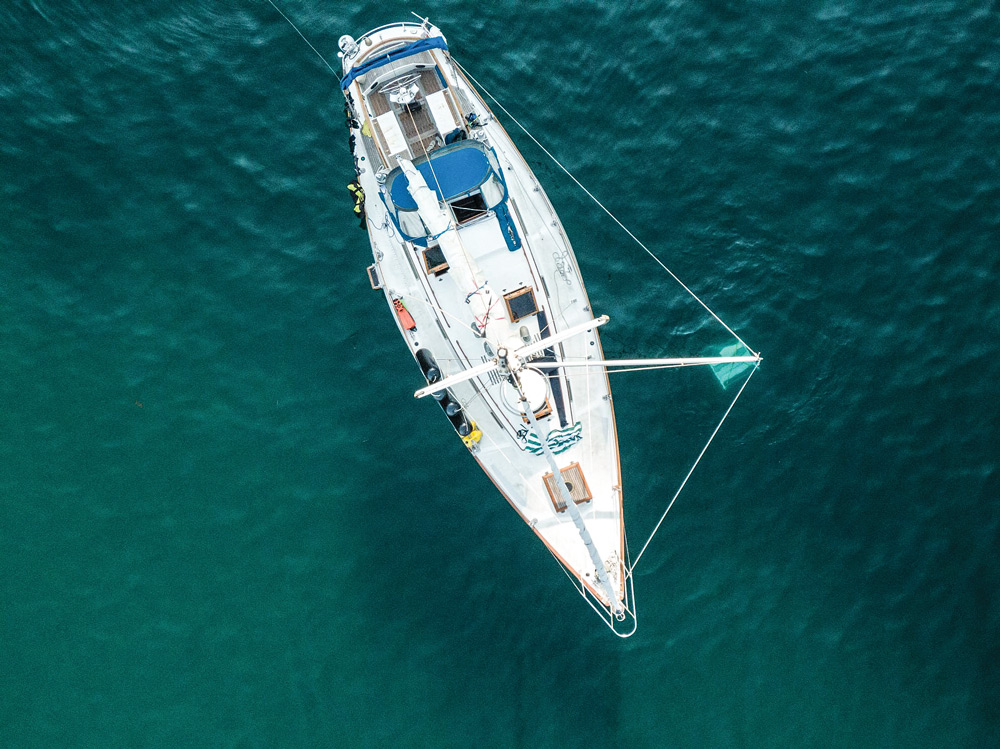Reduce the roll
Take some motion out of the ocean for a good night’s sleep at anchor
Every time we post a photo of our boat at anchor we immediately get asked “What’s that off of your spinnaker pole?” The answer is simple: it’s insurance that we will get a good night of sleep.
Our 41-foot 1979 Cheoy Lee Avocet is a steady boat due to her stout, deep tumblehome design that takes her curves well below the waterline. Despite her relatively wide beam and comfortable layout, we still fall victim to the rock and roll of the ocean’s swell at anchor which can be one of the most miserable experiences a crew can suffer. To remedy the unbearable and not-so-gentle anchorage conditions we can always rely on our roll reducer, more commonly known as a “flopper stopper” to help slow the roll up to 50% and return a sense of comfort on the hook.

The best system and deployment method will vary from boat to boat and be dependent on budget, but there are several ways to rig a roll reducer.
Types of roll reducers
Perhaps the cheapest option of all the flopper stoppers we have seen would have to be a 5-gallon bucket. There are a lot of DIY options out there for this concept since the materials are easily obtainable and the application is simple. The common method is to drill numerous holes in the bottom of a 5-gallon bucket and add some weight. The weight in the bucket causes it to sink, allowing water to flow through the holes. When the boat rolls and the bucket is lifted, the resistance will theoretically slow the roll. However, some sailors say the buckets can reach an equilibrium of sorts, with no deflection or drag, causing them to float around, lifting and falling with each swell.
The key to the 5-gallon bucket method, and really all roll reducing methods, is a lot of weight. A benefit of this simple flopper stopper is that the buckets can be stowed relatively easily and hold other items when not in use.
Although you can use nearly any malleable and marine resistant metal (or treated wood), sailors around the globe swear by the aluminum sheet flopper stopper. Kleanthis Anastasakia, who owns a Nicholson 38, uses a 5-millimeter-thick aluminum sheet, cut to about 3-feet square with rounded corners. He then attaches three lines to each corner and connect the lines to a swivel leading to a single line. The system is deployed off the beam of the boat from the end of the boom.

Comments